Uta Barth is a contemporary German-American photographer whose work addresses themes such as perception, optical illusion and non-place. Her early work emerged in the late 1980s and 1990s, "inverting the notion of background and foreground" in photography and bringing awareness to a viewer's attention to visual information with in the photographic frame. Her work is as much about vision and perception as it is about the failure to see, the faith humans place in the mechanics of perception, and the precarious nature of perceptual habits. Barth's says this about her art practice: “The question for me always is how can I make you aware of your own looking, instead of losing your attention to thoughts about what it is that you are looking at." She has been honored with two National Endowments of the Arts fellowships, was a recipient of the John Simon Guggenheim Fellowship in 2004‑05, and was a 2012 MacArthur Fellow. Barth lives and works in Los Angeles, California.
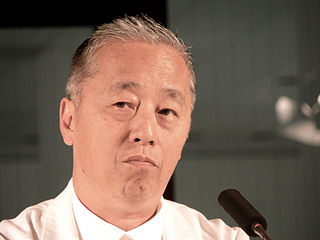
Hiroshi Sugimoto is a Japanese photographer and architect. He leads the Tokyo-based architectural firm New Material Research Laboratory.

Alice Neel was an American visual artist, who was known for her portraits depicting friends, family, lovers, poets, artists, and strangers. Her paintings have an expressionistic use of line and color, psychological acumen, and emotional intensity. Her work depicts women through a female gaze, illustrating them as being consciously aware of the objectification by men and the demoralizing effects of the male gaze. Her work contradicts and challenges the traditional and objectified nude depictions of women by her male predecessors. She pursued a career as a figurative painter during a period when abstraction was favored, and she did not begin to gain critical praise for her work until the 1960s. Neel was called "one of the greatest portrait artists of the 20th century" by Barry Walker, curator of modern and contemporary art at the Museum of Fine Arts, Houston, which organized a retrospective of her work in 2010.
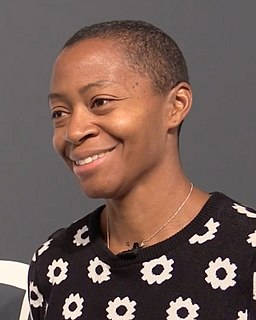
Kara Elizabeth Walker is an American contemporary painter, silhouettist, print-maker, installation artist, filmmaker, and professor who explores race, gender, sexuality, violence, and identity in her work. She is best known for her room-size tableaux of black cut-paper silhouettes. Walker was awarded a MacArthur fellowship in 1997, at the age of 28, becoming one of the youngest ever recipients of the award. She has been the Tepper Chair in Visual Arts at the Mason Gross School of the Arts, Rutgers University since 2015.
Barbara Kruger is an American conceptual artist and collagist associated with the Pictures Generation. She is most known for her collage style that consists of black-and-white photographs, overlaid with declarative captions, stated in white-on-red Futura Bold Oblique or Helvetica Ultra Condensed text. The phrases in her works often include pronouns such as "you", "your", "I", "we", and "they", addressing cultural constructions of power, identity, consumerism, and sexuality. Kruger's artistic mediums include photography, sculpture, graphic design, architecture, as well as video and audio installations.

Kehinde Wiley is an African-American portrait painter based in New York City, who is known for his highly naturalistic paintings of Black people, frequently referencing the work of Old Master paintings. He was commissioned in 2017 to paint a portrait of former President Barack Obama for the Smithsonian National Portrait Gallery, which has portraits of all previous American presidents. The Columbus Museum of Art, which hosted an exhibition of his work in 2007, describes his work as follows: "Wiley has gained recent acclaim for his heroic portraits which address the image and status of young African-American men in contemporary culture."
Sherrie Levine is an American photographer, painter, and conceptual artist. Some of her work consists of exact photographic reproductions of the work of other photographers such as Walker Evans, Eliot Porter and Edward Weston.
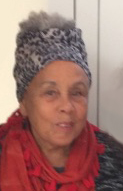
Betye Irene Saar is an African-American artist known for her work in the medium of assemblage. Saar is a visual storyteller and an accomplished printmaker. Saar was a part of the Black Arts Movement in the 1970s, which engaged myths and stereotypes about race and femininity. Her work is considered highly political, as she challenged negative ideas about African Americans throughout her career; Saar is best known for her art work that critiques American racism toward Blacks.

Ann Hamilton is a visual artist who emerged in the early 1980s known for her large-scale multimedia installations. After receiving her BFA in textile design from the University of Kansas in 1979, she lived in Banff, Alberta, and Montreal, Quebec, Canada before deciding to pursue an MFA in sculpture at Yale in 1983. From 1985 to 1991, she taught on the faculty of the University of California at Santa Barbara. Since 2001, Hamilton has served on the faculty of the Department of Art at the Ohio State University. She was appointed a Distinguished University Professor in 2011.

The Williams College Museum of Art (WCMA) is a college-affiliated art museum in Williamstown, Massachusetts. It is located on the campus of Williams College, and is close to the Massachusetts Museum of Contemporary Art and the Clark Art Institute. Its growing collection encompasses more than 14,000 works, with particular strengths in contemporary art, photography, prints, and Indian painting. The museum is free and open to the public.
Alison Saar is a Los Angeles, California based sculptor, mixed-media, and installation artist. Her artwork focuses on the African diaspora and black female identity and is influenced by African, Caribbean, and Latin American folk art and spirituality. Saar is well known for "transforming found objects to reflect themes of cultural and social identity, history, and religion."
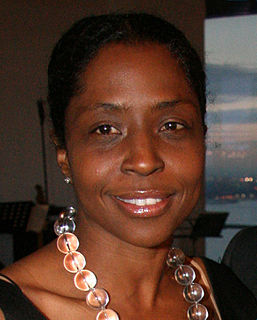
Lorna Simpson is an American photographer and multimedia artist. She came to prominence in the 1980s and 1990s with artworks such as Guarded Conditions and Square Deal. Simpson is most well-known for her work in conceptual photography. Her works have been included in numerous exhibitions both nationally and internationally. She is best known for her photo-text installations, photo-collages, and films. Her early work raised questions about the nature of representation, identity, gender, race and history. Simpson continues to explore these themes in relation to memory and history in various media including photography, film, video, painting, drawing, audio, and sculpture.
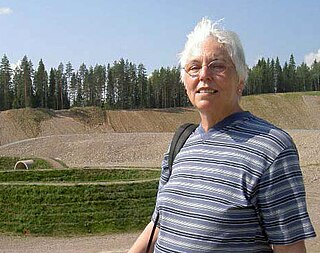
Nancy Holt was an American artist most known for her public sculpture, installation art, concrete poetry, and land art. Throughout her career, Holt also produced works in other media, including film and photography, and wrote books and articles about art.
Anne Collier is an American visual artist working with appropriated photographic images. Describing Collier's work in Frieze art magazine, writer Brian Dillon said, "Collier uncouples the machinery of appropriation so that her found images seem weightless, holding their obvious meaning in abeyance."

Dorit Cypis is a Canadian-American artist, mediator and educator based in Los Angeles. Her work has collectively explored themes of identity, history and social relations through installation art, photography, performance and social practice. After graduating from California Institute for the Arts (CalArts), she attracted attention in the 1980s and 1990s for her investigations of the female body, presented in immersive installation-performances at the Whitney Museum, International Center of Photography, San Francisco Museum of Modern Art (SFMOMA), and Musée d'art contemporain de Montréal. Counter to much feminist work of the time, Cypis focused on interiority and personal mythologies rather than exterior political realms, and according to art historian Elizabeth Armstrong, made a significant contribution to discourse about the representation of women and female sexuality.

Andrea Bowers is a Los Angeles-based American artist working in a variety of media including video, drawing, and installation. Her work has been exhibited around the world, including museums and galleries in Germany, Greece, and Tokyo. Her work was included in the 2004 Whitney Biennial and 2008 California Biennial. She is on the graduate faculty at Otis College of Art and Design.

Kim Victoria Abeles is an American interdisciplinary artist and professor emeritus currently living in Los Angeles. She is described as an activist artist because of her work's social and political nature. She is also known for her feminist works. Abeles has exhibited her works in 22 countries and has received a number of significant awards including a Guggenheim Fellowship. Aside from her work as an artist, she was a professor in public art, sculpturing, and drawing at California State University, Northridge from 1998 to 2009, after which she became professor emerita in 2010.

Eileen Cowin is a Los Angeles-based artist known for photography, video and mixed-media installations that draw on the language of mass media and art history and explore the relationship between narrative, fiction and non-fiction, memory and experience. Associated with the 1970s Los Angeles experimental photography scene and the Pictures Generation artists, her work combines familiar human situations and carefully chosen gestures, expressions and props to create enigmatic images whose implied, open-ended stories viewers must complete. Cowin has exhibited in more than forty solo shows in the United States and abroad, including at the Los Angeles County Museum of Art (LACMA), Museum of Contemporary Photography, Armory Center for the Arts and Contemporary Arts Center. Her work is included in more than forty institutional collections, including LACMA, the J. Paul Getty Museum, Brooklyn Museum, Art Institute of Chicago, San Francisco Museum of Modern Art (SFMOMA), and Smithsonian American Art Museum. She has been recognized with awards and commissions from the National Endowment for the Arts, LACMA, the City of Los Angeles (COLA), Public Art Fund, and the Sundance and USA film festivals. New York Times critic Andy Grundberg wrote that her multi-image work "sets up a tension between the familiar and the mysterious, creating a climate of implied danger, sexual intrigue and violence" in which clues abound to intimate various narratives. Jody Zellen observed that Cowin "manipulates the conventions of photography, film, and video to tell a different kind of story—one that explores where truth and fiction merge, yet presents no conclusions. Cowin's work provokes."

Sheila Pinkel is an American visual artist, activist and educator whose practice includes experimental light studies, photography, conceptual and graphic works, and public art. She first gained notice for cameraless photography begun in the 1970s that used light-sensitive emulsions and technologies to explore form; her later, socially conscious art combines research, data visualization, and documentary photography, making critical and ethical inquiries into the military-industrial complex and nuclear industry, consumption and incarceration patterns, and the effects of war on survivors, among other subjects. Writers identify an attempt to reveal the unseen—in nature and in culture—as a common thread in her work.
Linda Nishio is a Japanese-American artist whose conceptual pieces focus on self-image and issues of representation, using photographs, text, performance, and film. She taught at the Otis College of Art and Design in Los Angeles.














